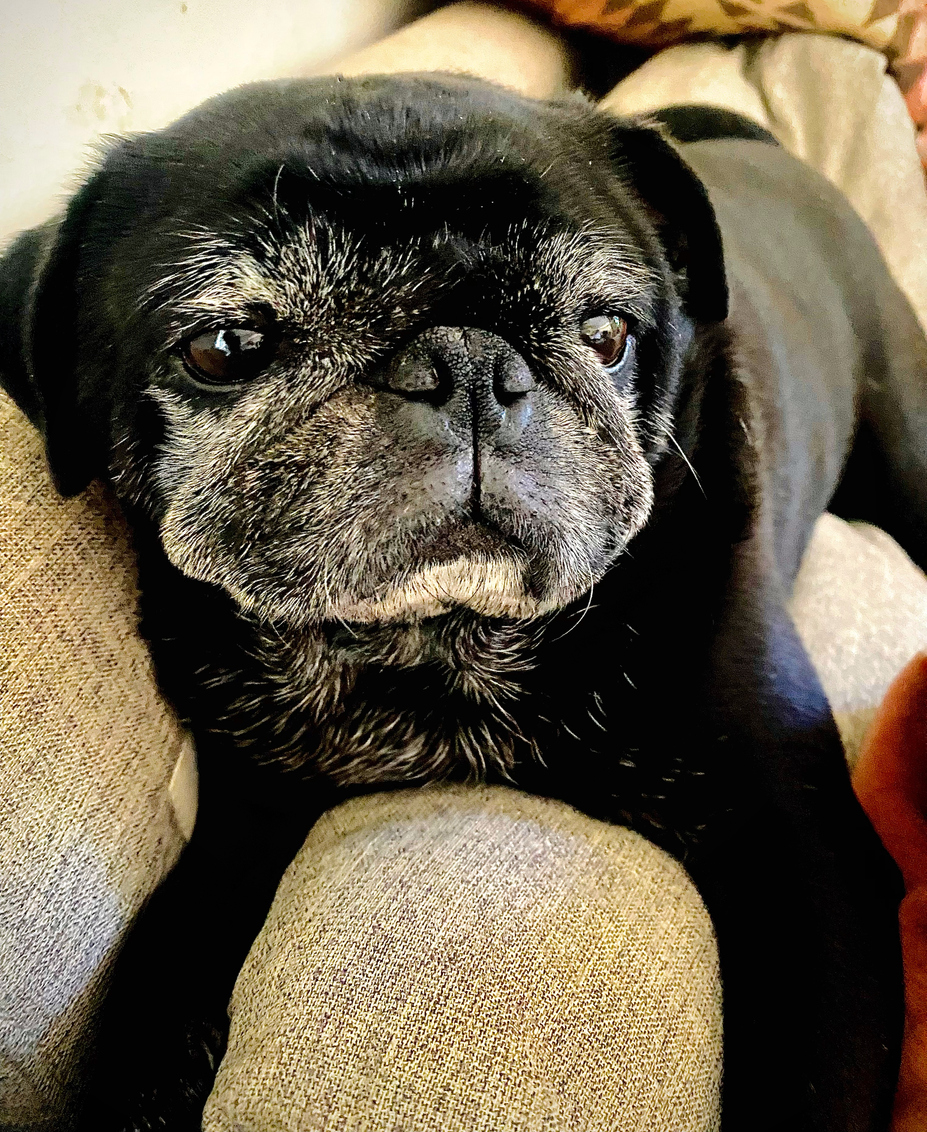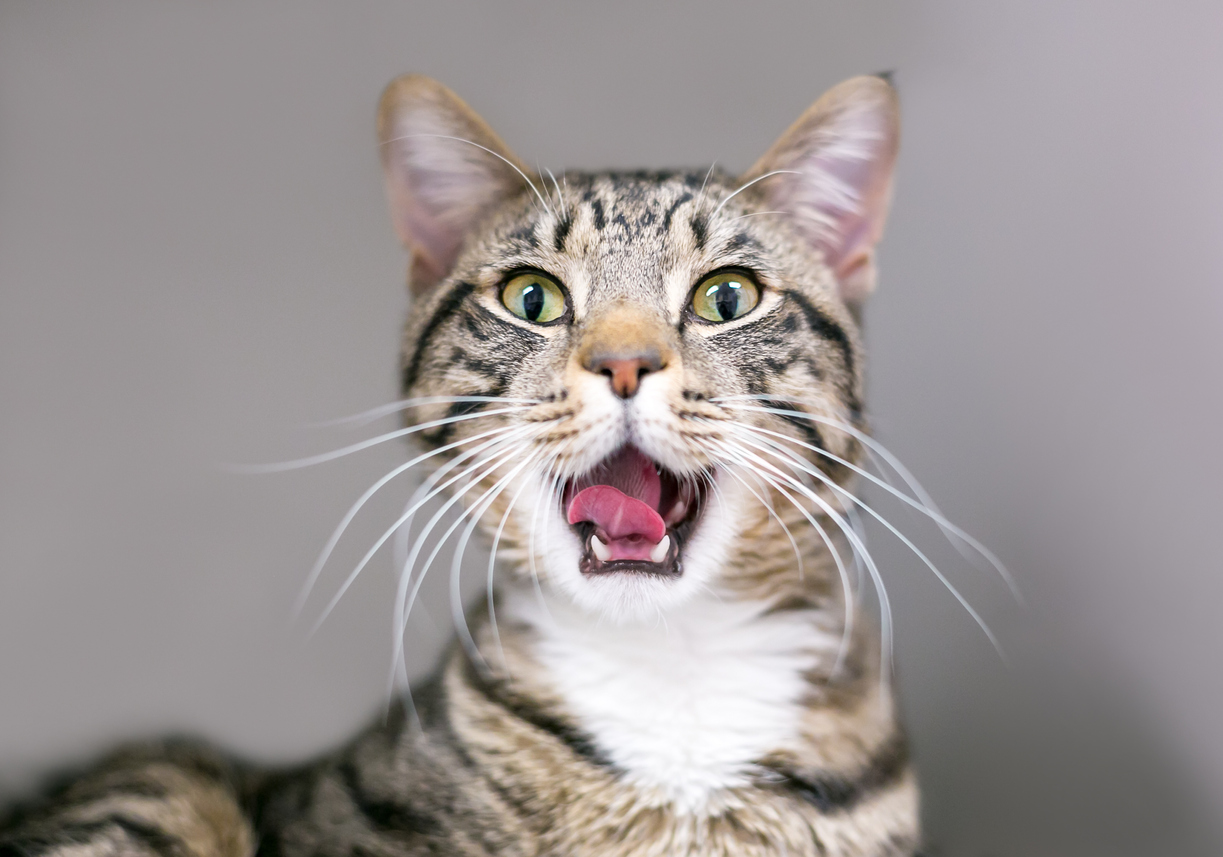Lymphocytic Plasmacytic Gingivostomatitis
What are gingivitis and stomatitis?
They are terms denoting inflammation of specific tissues. Gingivitis refers to inflammation of the gingiva (the gums). Gingivitis is the earliest stage of periodontal disease.
Stomatitis refers to a more generalized inflammation, whereby most and possibly all of the oral tissues including the gums, tongue, inner surfaces of the lips, and/or the floor and roof of the mouth are affected.
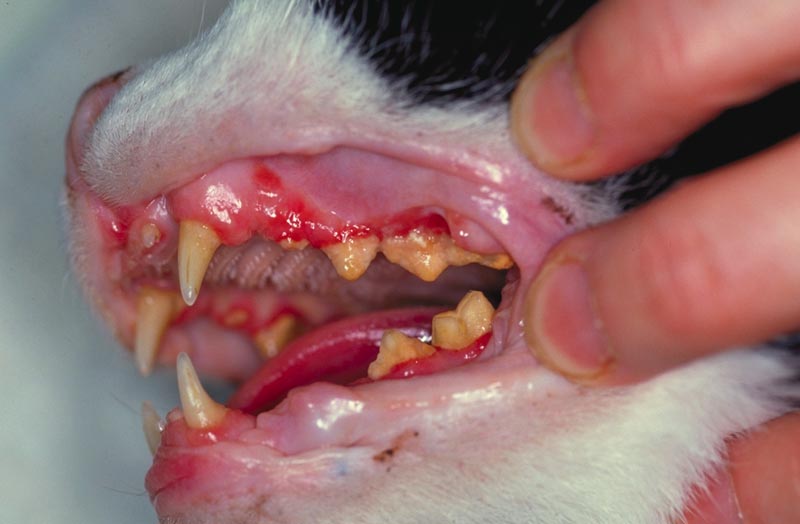
What causes gingivitis and stomatitis?
Gingivitis is most commonly caused by a bacterial infection from plaque bacteria on the teeth and is usually associated with poor oral hygiene. When bacteria come into contact with the gingiva and possibly even enter into the space between the gum and the tooth (known as the gingival sulcus), they cause an inflammatory reaction. Left untreated, bacterial infection of the gingival sulcus can progress to tooth support loss (periodontal disease).
The cause of stomatitis is unknown. It may be caused by a hyperimmune (overreaction) response of the oral tissues to bacterial plaque.
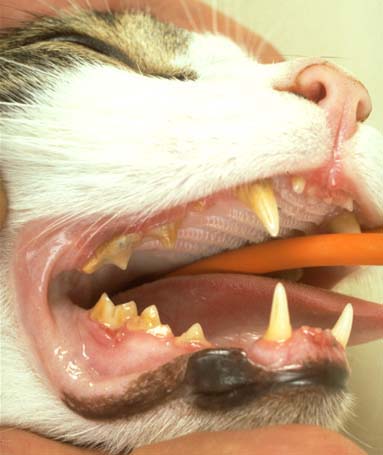
What are the clinical signs of gingivitis and stomatitis?
Gingivitis is an inflammation along the gumline where the gum contacts the tooth, and appears as a thin red line along the edge of the gums resulting in swollen gum tissue and often halitosis (bad breath). When the teeth are brushed, the inflamed gums will often bleed.
Stomatitis is a more severe form of oral inflammation involving more than just the gingiva. Stomatitis is often very painful causing a decreased appetite due to the pain. Often the cat’s haircoat will appear unkempt due to lack of self-grooming (which becomes too painful for the cat to do).
How are these conditions diagnosed?
Diagnosis is primarily based on medical history and clinical signs. Blood and urine tests are often recommended to look for any underlying systemic disease. Intraoral radiographs (X-rays) are taken to determine if there is any damage to the tooth roots and other supporting structures.
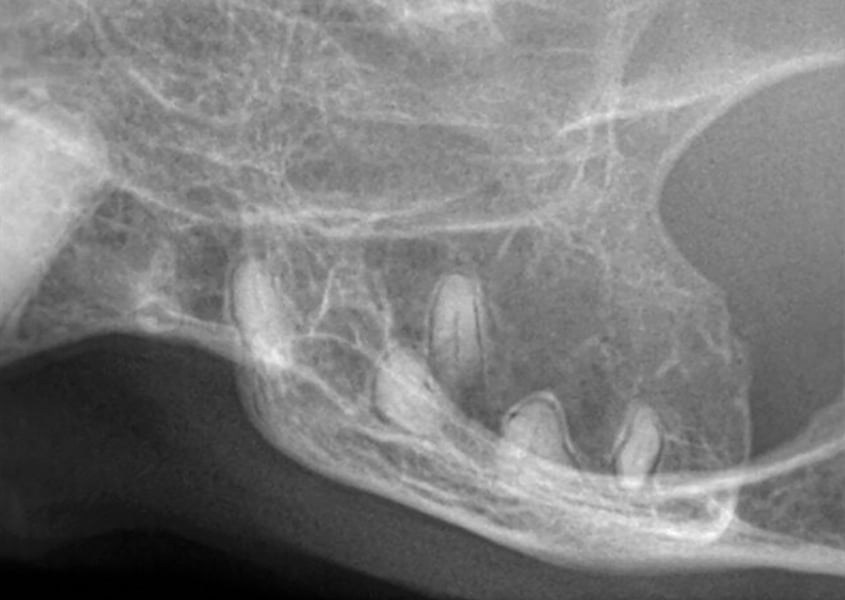
How are gingivitis and stomatitis treated?
A thorough evaluation and removal of plaque and tartar under general anesthesia is the first step in treatment for gingivitis. The deposits of tartar are removed, and the tooth surfaces are scaled (cleaned) ultrasonically and then polished. It is important to clean the tissues beneath the gum line carefully to remove any accumulated plaque or tartar.
The treatment of stomatitis involves treating the underlying cause of the problem if there is one that can be identified. Most often no specific cause is determined. Many cats will require broad-spectrum antibiotics, chlorhexidine rinses or gels, and anti-inflammatory medications.
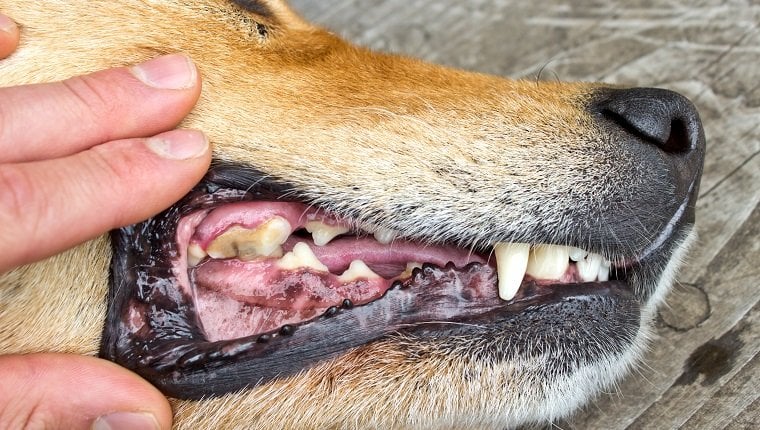
What is the prognosis for gingivitis and stomatitis?
The prognosis for gingivitis alone is excellent, provided you follow your veterinarian's instructions. Your cat will benefit tremendously from a professional oral assessment teeth cleaning under anesthesia followed by instituting a consistent homecare routine.
The prognosis for stomatitis varies depending on the individual cat and needs to be addressed on a case-by-case basis.


